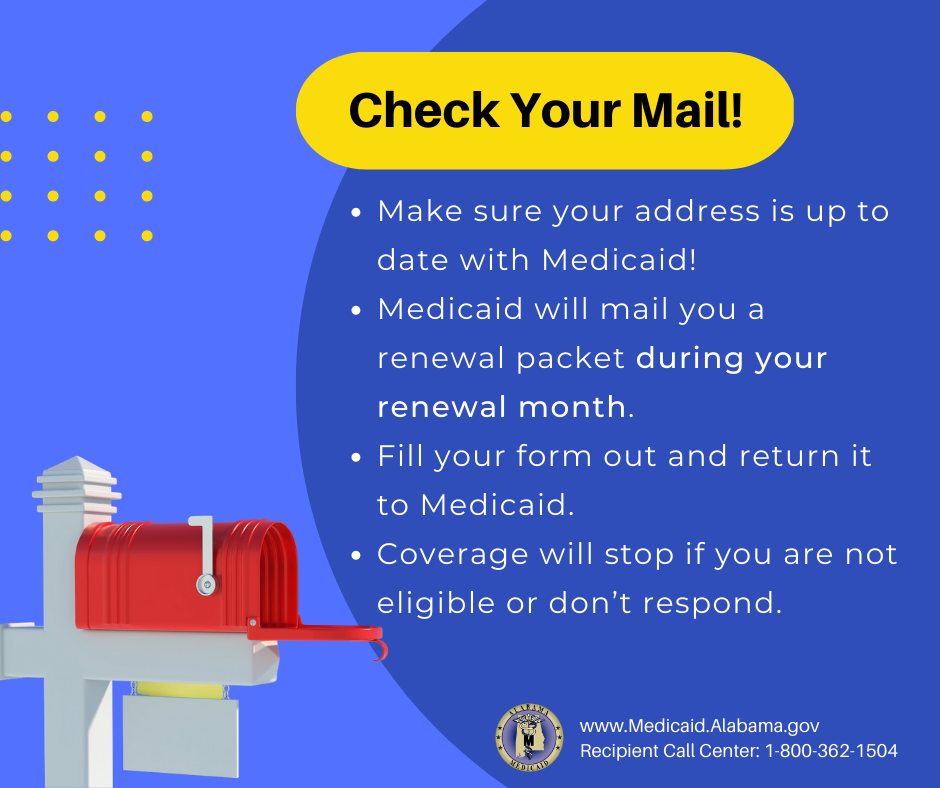In 2020, we watched as the COVID-19 pandemic changed the world. Many of us searched for toilet paper, stocked up on groceries and spent a lot of quality time in our homes as we sheltered in place. But the world did not change only in our daily lives. This public health emergency (PHE) also led Medicaid officials to take additional steps to ensure people could afford to get medical care when they needed it.
As the PHE’s end approaches, though, tens of thousands of Alabamians will start paying more for critical medical care – or simply be unable to afford it – unless our state lawmakers take action. About 61,000 Alabamians are expected to lose Medicaid coverage by June 2024 due to this change, according to a report by the Robert Wood Johnson Foundation and Urban Institute.
These coverage losses and higher health care costs would come during a pandemic that is still ongoing. And they would leave many Alabamians with no realistic option for affordable coverage because our state still has not expanded Medicaid to cover adults with low incomes.
Medicaid expansion is the single best step Alabama could take to preserve health coverage and reduce costs for people who cannot afford a private plan and otherwise would be uninsured. In the meantime, state officials should be proactive in communicating with enrollees and facilitating transitions to Marketplace coverage where possible.
Continuous coverage eligibility kept many Alabamians insured
When federal officials declared the official public health emergency (PHE) in 2020, they activated measures to ensure that millions of Americans maintained access to health coverage. Medicaid, the health insurance program funded by federal and state governments and administered by states, was essential to these efforts.
Medicaid received additional federal funding to keep current and new enrollees eligible until the PHE’s end. Under this maintenance of effort (MOE) requirement, traditional eligibility criteria were relaxed.
The relaxed criteria led to continuous coverage eligibility. That meant Medicaid enrollees would not lose eligibility unless they requested in writing to be removed, moved out of state or died. Continuous coverage eligibility also meant changes in income or family size no longer caused removal from Medicaid during the PHE.
The MOE requirement increased the Alabama Medicaid rolls by approximately 50%. The additional federal funding, through an increased Federal Medical Assistance Percentage (FMAP), was necessary to help ensure everyone had access to health care services. But now that the MOE has been separated from the PHE, so too is continuous coverage eligibility. Alabama Medicaid will begin reviewing people for eligibility again starting April 1, 2023.
What is Medicaid unwinding, and how might it affect you?
The end of continuous coverage eligibility means states may return to traditional eligibility rules to determine continued Medicaid coverage. This return to normal rules is called “unwinding.” Alabama Medicaid will begin the unwinding process on April 1.
On that date, Alabama Medicaid will resume its traditional process for verification of eligibility. Alabama Medicaid officials say they will take one year to complete the unwinding process.
Current Medicaid enrollees will receive a mailing to their home addresses from Alabama Medicaid discussing these changes. Current enrollees should ensure their most current and up-to-date information is on file by visiting the recipient portal here.
Take action to maintain coverage
The stakes of unwinding are high. Approximately 61,000 Alabamians may lose their Medicaid coverage during the unwinding period. This could result in a 16% increase in the number of uninsured Alabamians.
The Alabama Unwinding Task Force, which Alabama Arise chairs, is working with Alabama Medicaid to support outreach and communication efforts. This task force is ensuring that support is available for current eligible Medicaid enrollees to maintain their coverage. It also is working to ensure that people who no longer meet Alabama Medicaid’s eligibility criteria know their available options for continued coverage. To get involved with the Unwinding Task Force, email Arise’s Jennifer Harris at jennifer@alarise.org.
Individuals who remain eligible for Medicaid could be at risk of losing coverage during unwinding due to administrative barriers. To ensure they maintain coverage, eligible enrollees first should verify their current contact information. Next, they can elect to receive text messages from Medicaid with vital information by signing up here. And finally, enrollees should respond promptly to Alabama Medicaid’s requests for information to determine eligibility.
If an enrollee is no longer eligible for coverage through Alabama Medicaid, they should contact Enroll Alabama to discuss health insurance options that may be available to them on the Health Insurance Marketplace. They also can dial 211 to connect with an Enroll Alabama navigator who can assist in finding coverage.
Ultimately, state lawmakers should step up to ensure every Alabamian can afford the health care they need to thrive. Thirty-nine states and the District of Columbia have invested in their people’s health and well-being by expanding Medicaid. Alabama can and should do the same.


